Introduction
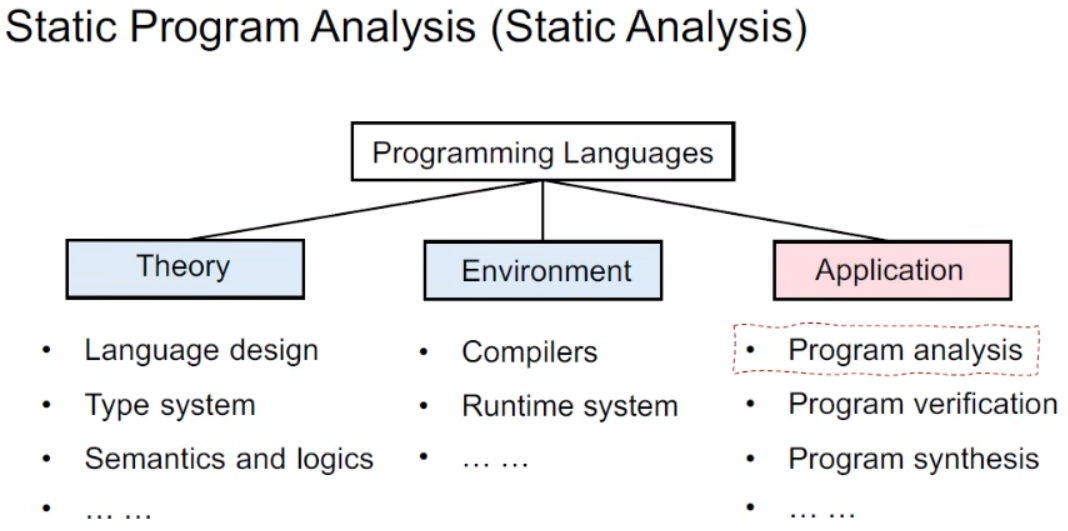
Why we need static analysis
- reliability
- security
- compiler optimization(编译优化)
- program understanding
Static Analysis
Static analysis analyzes a program P to reason about its behaviors and determines whether it satisfies some properties before runnning P.
ps.静态+运行前分析
Useful static analysis
mostly compromising completensee:Sound(overapproximate) but not fully-precise static analysis.
保证全面性而可以损失精度
-
Soundness(全面) is critical to a collection of important(static-analysis) applications such as compiler optimization and program verification.
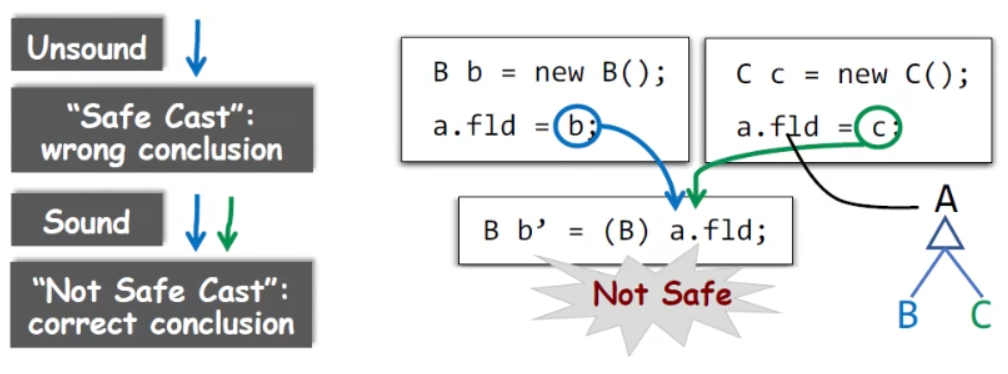
-
Soundness is also preferable to other(static-analysis) applications for which soundness is not demanded,e.g.,bug detection,as better soundness implies more bugs could be found.
Static analysis:ensure(or get close to)soundness,while making good trade-offs between analysis precision and analysis speed.在确保全面的情况下,在精度和速度之间平衡
Conclude static analysis
-
abstraction 抽象
- 将程序从原始的、高维的源代码空间,映射到一个抽象的、低维的符号空间。符号化后,后续的优化、分析、处理都会更加方便。
-
over-approximation 过近似 -> be sound
-
transfer funtions 转换函数
- in static analysis,transfer functions define how to evaluate different program statements on abstract values.
- transfer functions are defined according to “analysis problem” and the “semantics” of different statements.
-
control flows 控制流
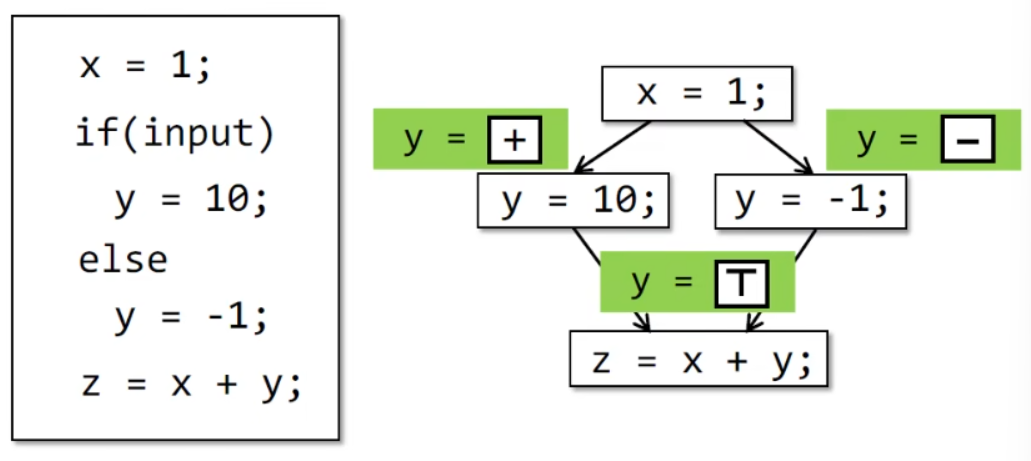
As it’s impossible to enumerate all paths in practice,flow merging (as a way of over-approximation) is taken for granted in most static analyses. 分支流合并,提升soundness,降低completeness,导致误报
-
Self test
-
what the differences between static analysis and dynamic testing?
区别为分析时程序所处的状态,静态分析是程序运行前针对代码本身的分析,动态测试为程序运行时针对功能点的测试
-
understand soundness ,completeness,false negatives,false positives
soundness 完全性 completeness 正确性
false negatives(保证正确性,损失完整性,造成漏报)
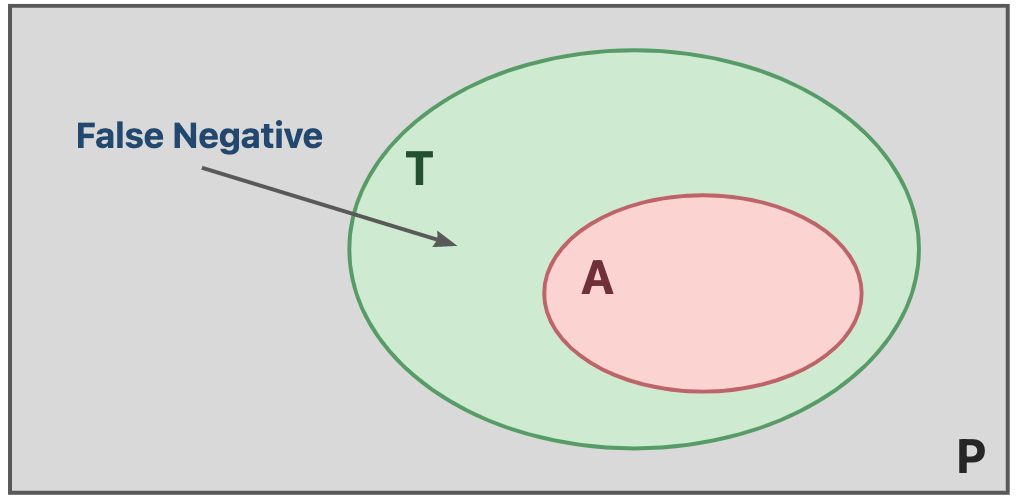
false positives(保证完整性,损失正确性,造成误报)
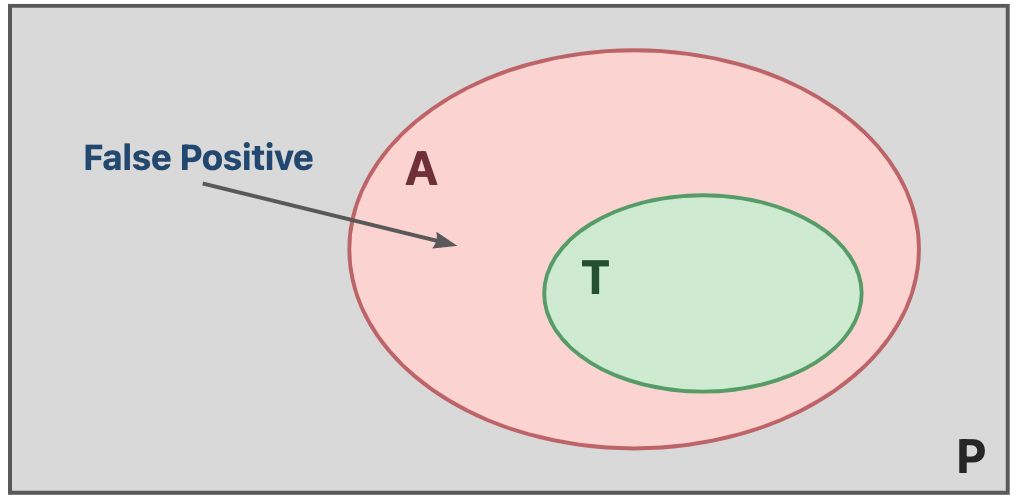
-
why soundness is usually required by static analysis
生产环境下对于完全性需求是首要的,因为要保证业务功能都被覆盖,是不"允许"漏报的
-
how to understand abstraction and over-approximation
abstraction 抽象
over-approximation 转化函数+控制流